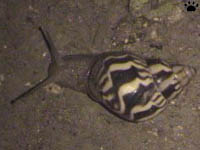
Drymaeus snail, Chiapas.
Driving through Mexico - Part 2
The favorite national pasttime in Mexico is installing topes
(speed bumps). For every family living in a roadside house, world is incoplete
until a tope is built, just to make sure that the family is cursed by each passing
driver. Many topes are almost invisible. To cross the country from USA to Guatemala
by non-toll roads (carretera libre), you have to drive over about 2,000
topes, some of them in remote areas many miles from any human settlements.
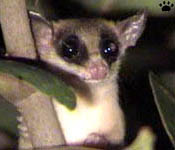 |
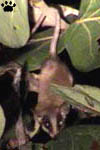 |
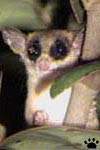 |
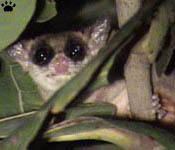 |
| Mexican mouse opossum
(Marmosa mexicana), Sian Ka'an Biosphere Reserve. |

Common opossum (Didelphis marsupialis)
is a
typical mammal of Mexican countryside. |
You have to be very careful driving at night,
when well-camouphlaged topes, bottomless potholes, playful kids, and feral dogs
are joined on the roads by numerous livestock and some interesting wildlife. |

Opossums are fearless and a bit slow, so they
often become victims of automobiles. |
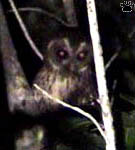 |
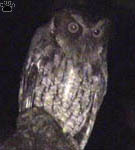 |
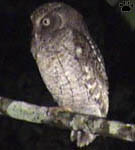 |
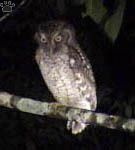 |
| Owls of Southern Mexico,
left to right: Strix virgata, Otus cooperi, O. guatemalae
(2 photos). |
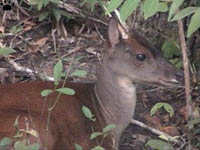
Red brocket deer (Mazama americana),
Highway 186, Quintana Roo. |
Most of time at night you see opossums, raccoons,
gray foxes, skunks, rabbits, frogs, toads, turtles,
and nightjars, but occasionally also deer, coyotes, armadillos, owls, snakes,
shrews, and various small rodents. |

West Mexican rabbit (Sylvilagus cunicularis),
Highway 200, Jalisco. |
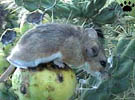 |
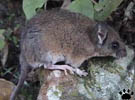 |
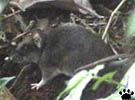 |
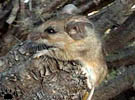 |
| Deer mice of
Mexico, left to right: Peromyscus eremicus, P. furvus, P. bullatus,
P. difficilis. |
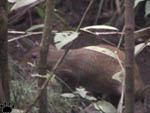
Central American agouti
(Dasyprocta punctata),
Highway 186, Quintana Roo. |
The best paved roads for wildlife viewing after
midnight are Hwy 200 in Jalisco and Michoacan (away from Acapulco), Highways 184,
261 and 186 on Yucatan Peninsula, Hwy 70 east from San Luis Potosi, roads of Sierra
Tarahumara, and Carretera Fronteriza in Chiapas. |
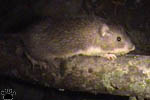
Mexican pocket mouse
(Liomys irroratus),
Highway 70, San Luis Potosi. |
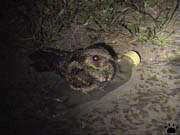 |
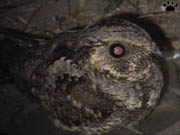 |
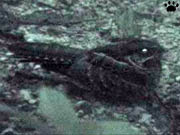 |
| Nightjars of Carretera
Fronteriza, Chiapas: a mysterious Caprimulgus sp. (larger photos and more
information here), Nyctidromus albicollis. |
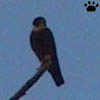
Bat falcon (Falco
rufigularis), Carretera
Fronteriza. |
Carretera Fronteriza is also good for diurnal
animals, such as birds of prey. Other highways good for birdwatching are Durango-Mazatlan
Hwy, roads in Tepic/San Blas area, Autlan-Ciudad Guzman Rd. in Colima, El Fortin-Tatutla
Rd. in Veracruz, roads in Chiapas/Oaxaca border area, and on Isla Cozumel. Of
course, unpaved roads are even more interesting - for example, El
Cielo area roads in Tamaulipas. |
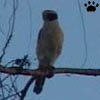
Lauphing falcon
(Herpetotheres
cachinnans), C.Front. |
 |
 |
 |
 |
 |
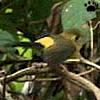 |
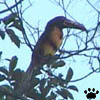 |
 |
Common birds of Southern
Mexico, upper row, left to right: Trogon massena, T. citreolus,
Campephilus guatemalensis, Rhamphocelus passerinii, Platyrinchus
mystaceus, Myiobius sulphureupygius; bottom row: Pteroglossus torquatus
(two photos), Cissilopha yucatanica (juvenile and adult). |
 |
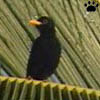 |
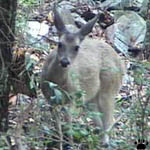
White-tailed deer (Odocoileus
virginianus), Rio Fuerto, Sinaloa. |
Sierra Madre Occidental is a particularly scenic
and diverse part of the country. Any backcountry road that crosses or approaches
the border between Chihuahua, Sonora and Sinaloa is likely to take you to some
remote, pristine, little-studied area with lots of rare wildlife - if you are
very lucky, even jaguars (Panthera onca). |

Queen (Danais gilippus),
Rio Fuerto, Sinaloa. |
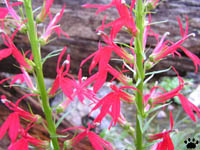
Sierra Madre lobelia (Lobelia laxiflora),
Nacori Chico, Sonora. |
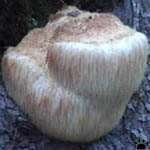
Lion's mane fungus (Hericium
erinaceus), Nacori Chico, Sonora. |
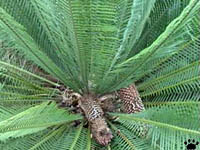
Sonoran cycad (Dioon tomasellii),
Nacori Chico, Sonora. |

Southern long-nosed
bat (Leptonycteris
curasoae), Sinaloa. |
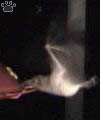
Mexican long-nosed bat
(L. nivalis), Rio
Fuerto, Sinaloa. |
Almost anywhere in Mexico, hanging a hummingbird
feeder from a tree will give you great views of nectar-feeding bats at night.
These three species are common in the north in summer. |

Mexican long-tongued
bat (Choeronycteris
mexicana), Sinaloa. |
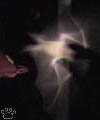
Long-nosed bat
(Leptonycteris sp.),
Rio Fuerto, Sinaloa. |

|

|
 |
 |
 |
| Mexican long-tongued bats and California
leaf-nosed bat (Macrotus californicus, right), Arizona/Sonora border area
east from Douglas. |

Squirrel cuckoo
(Piaya cayana),
Chiapas. |
Traffic rules in Mexico are almost the same as
in the USA, but drivers outside big cities are more polite and cautious: most
of them can't afford an accident! There's no right turn on red light. Watch for
hidden stop signs (often reduced to stripes on the pavement) and unmarked one-way
streets. On highways, left turn signal is used to tell those behind you that it
is safe to pass. But in the North, some drivers now use turn signals US way, so
be careful. Don't try to emulate local driving habits until you feel confident
enough. Only then can you really enjoy the relative freedom of Mexican driving:
run red lights, pass trucks and buses during blind turns, fly at five times the
speed limit. Cops can be mean, but they are rare. |

Squirrel cuckoo
(Piaya cayana),
Chiapas. |

Anolis lizard, Guerrero. |
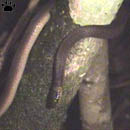
Conyophanes snake, Puebla. |

Bufo toad, Yucatan. |

Gastrophryne toad, Yucatan. |
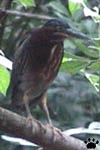
Green heron
(Butorides virecens),
Tabasco. |

Pinnated bittern
(Botaurus pinnatus),
Sinaloa. |
If you get pulled over, try to talk your way out.
Tell them you don't speak any language, or are driving from Alaska to Patagonia
or vice versa. If it doesn't work, offer to pay in cash, then bargain like hell,
until you agree on 1-5% of what they ask for. |
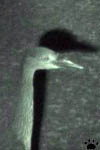
Yellow-crowned night
heron (Nyctanassa
violacea), Campeche. |

Gray-necked wood
rail (Aramides
cajanea), Chiapas. |
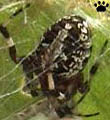 |
 |
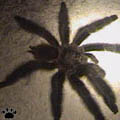 |
 |
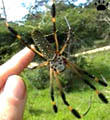 |
| Assorted spiders, Southern
Mexico. |

Gecko Coleonyx elegans, Chiapas. |
During police searches, especially in the South,
keep an eye on all your belongings. Even old sandals, empty bottles, trash bags,
used condoms, books and audiotapes in foreign languages can be stolen. |
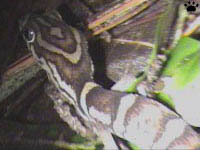
Gecko Coleonyx elegans, Chiapas. |
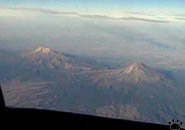 |
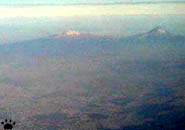 |
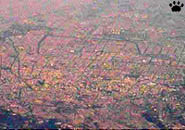 |
| Aerial views of Mexico
City and its volcanoes - Popocatepetl (right) and Iztaxiuatl. |
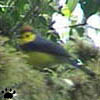
Myioborus torquatus,
Monteverde, Costa Rica. |
You won't be able to take your car into Mexico
if you're still paying for it. If you've paid for it in full, make sure you have
some document to prove it. Don't forget to have your passport stamped when leaving
Mexico, or you'll have problems during your next visit. In Belize, car insurance
is obligatory, but unavailable if you arrive on weekend - a major source of income
for local police. There's no road from Panama to Colombia. |
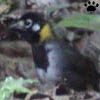
Melozone leucotis,
La Tigra, Honduras. |
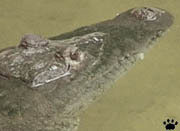 |

 |
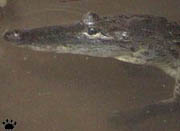 |
| Central American crocodiles
(Crocodilus acutus), Semindero Canyon, Chiapas. |
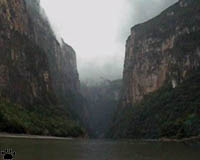
Semindero Canyon, Chiapas. |
At first, it will seem to you that city drivers
in Mexico are reckless. But in a few days you'll find yourself being as relaxed
and confident as they are, and probably notice that you are honked at as often
as anybody else. |
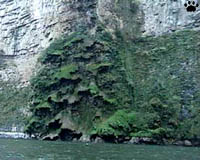
Christmas Tree waterfall, Semindero Canyon. |
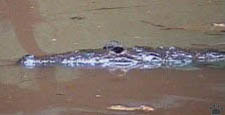
Morelet's crocodile (C. moreleti),
Montes Azules, Chiapas.
Part 3: Ancient Cities
Back to Part 1
Home
|